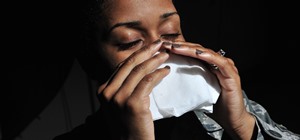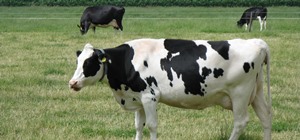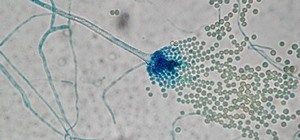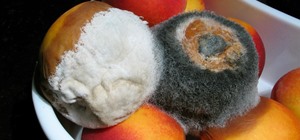Seagrass may help your favorite beach stay a little less toxic. A new study, led by Joleah Lamb, a postdoctoral researcher in the Harvell Lab at Cornell University, found that coastal seagrasses reduce levels of pathogens dangerous to humans and marine organisms in near-shore waters.
If you have ever heard of a beach closure due to high "fecal coliform" counts, then you already know a little bit about Enterococci. Despite the beauty of a beach, the microbes in the water can make you sick. Senior author on the study, Drew Harvell, a professor of ecology and evolutionary biology at Cornell University who runs the Harvell Lab, said in a press release:
The genetic sequencing work pinpointed the kinds of bacteria—all in difficult, arduous conditions. It showed exactly what was in the water. The beautiful oceanside water looked blue-green, but truly it was filled with dangerous pollution—some really bad stuff in the water close to shore.
Normally living in the gut of humans and animals, Enterococcus bacteria are shed in abundance in feces. Enterococci are also robust, capable of surviving outside a host body, on beach sand, water, and even on kelp. The bacteria causes a variety of infections and is considered a high risk in healthcare settings due to antibiotic resistance.

Poor hygiene, inadequate wastewater treatment, and strong survival skills make Enterococci a dangerous candidate for recreational beach contamination. When there is a beach closure, it is generally due to high levels of Enterococci and its partner indicator organism, Escherichia coli (E. coli).
Luckily, for everyone who loves the beach, a healthy beach ecosystem can decrease the likelihood of a coliform closure.
In the new study, which was published in the journal Science, Lamb, Harvell, and colleagues discovered an important function of the ecosystems created and maintained by seagrasses—reducing levels of pathogens in coastal waters. The study looked at what impact seagrass meadows have on the Enterococci contamination of near-shore waters around the world where people live, work, and play.
Seagrasses are plants adapted to living under water and in varying temperatures. With more than 70 known species of seagrass, these plants create ecosystems that grow along the shallow sloping coastlines of the US, and around the world, with the exception of Antarctica.
Many people confuse seagrasses with seaweed. Seaweeds are an algae, while seagrasses are similar to grasses and lilies found on land. They conduct photosynthesis, flower, absorb nutrients, and put down roots and rhizomes. Because seagrasses are "out of sight, out of mind" for most people, the upside of these important plants are not well understood. But here are a couple of their pretty serious benefits:
- Seagrasses help maintain clear water, and a healthy underwater landscape by trapping and filtering sediment, adding oxygen, removing excess phosphates from runoff, buffering against coastal erosion, and reducing on-shore wave impact.
- As plants, seagrasses act as carbon sinks, trapping carbon dioxide, a well-known greenhouse gas.
- Seagrass meadows provide shelter for microorganisms, young fish, and food for some marine animals such as the endangered green sea turtle.
To study their effect on bacteria in the ecosystem, scientists sampled seagrass meadows around four islands in Indonesia and paired the data with four similar islands that do not have surrounding seagrasses. Here is what they found:
- On similar shore sites sampled without seagrass, scientists found Enterococci levels were ten times the levels considered safe by the Environmental Protection Agency.
- Coastal waters of islands with seagrass meadows showed three times less Enterococci than their partner islands without seagrass ecosystems.
- Seawater sampled above coral reefs in seagrass ecosystems had two times lower levels of Enterococci than the sample sites without seagrass.
- Seawater tested offshore, between islands, was relatively low in Enterococci bacteria, suggesting the pathogen is reaching the shore by way of activities on land.
- Sampling of marine fish and invertebrates at the sites also revealed lower levels of bacterial pathogens where seagrass is present.
"Our results indicated that seagrass meadows significantly reduce bacterial loads and can benefit both humans and other organisms in the environment," the researchers wrote in their paper.

The value of using plants, watershed, and wetland ecosystems to filter sediment and percolate pathogens out of water is known, and in use.
In 1997, New York City purchased land in the Catskills Mountains instead of sinking $8 billion in a new filtration facility. The purchase and use of the land as watershed was an immense success, providing New York City with the largest unfiltered water supply in the country, reducing costs, boosting water safety, and inspiring protection of watershed land.
Closer to shore, the preservation of an underwater seagrass ecosystem could mean more sunny days for you and friends at the beach.
"Global loss of seagrass meadows is about 7 percent each year since 1990," Lamb said in the press release. "Hopefully this research will provide a clear message about the benefits of seagrasses for human and marine health that will resonate globally."
Just updated your iPhone? You'll find new emoji, enhanced security, podcast transcripts, Apple Cash virtual numbers, and other useful features. There are even new additions hidden within Safari. Find out what's new and changed on your iPhone with the iOS 17.4 update.


























Be the First to Comment
Share Your Thoughts